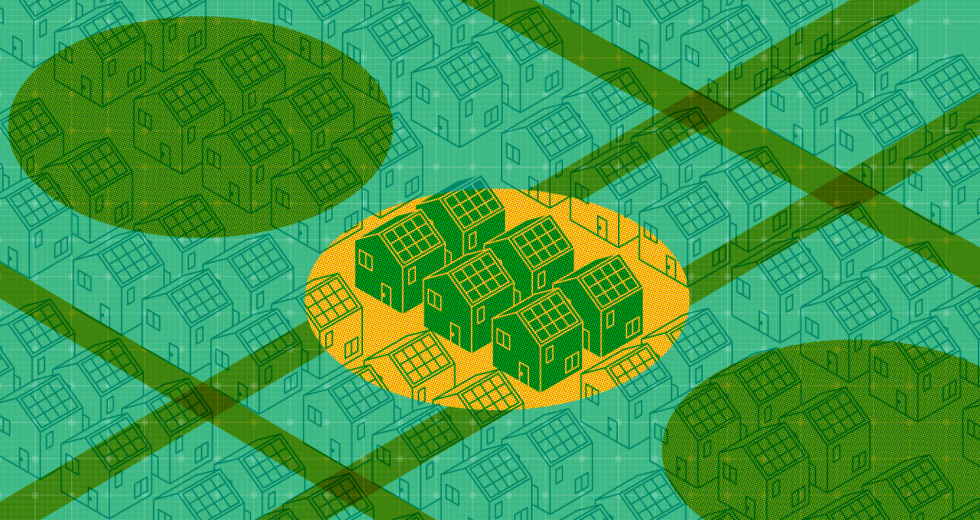Tribal sovereignty is an age-old Native American value that today is becoming synonymous with energy independence. With help from JLM Energy in Rocklin, the Bear River Band of Rohnerville Rancheria tribe is on the leading edge of the movement in California.
This summer, the tribe and JLM Energy are partnering to install the first integrated renewable energy system of its kind in California, comprising wind, solar and energy storage power — called a microgrid — on the Rohnerville Rancheria reservation in Humboldt County just south of Eureka.
In addition to offsetting the utility bill, the microgrid will allow the tribe to be more independent, provide training and jobs for its residents, and reduce its carbon footprint, all of which reflect tribal values. The small but significant endeavor is setting a new precedent for future projects as more California tribes look to follow suit.
“The principle of tribal sovereignty is really encapsulated in self-sufficiency to the extent that the tribe is really able to take care of itself,” says Matthew Mattson, the Bear River Band’s executive director of tribal operations. “The microgrid, in addition to providing that element of self-sufficiency that’s so important to sovereignty, also pencils out in the long run: Simply saving on power bills over time will save the tribe money and means that there are more dollars available for services for tribal members.”
The tribe first began working with the company to install a battery storage system — purchasing power at times when demand and costs are lower (say at 2 a.m. instead of 2 p.m.), and charging batteries to provide power during peak hours when demand spikes and the cost goes up.
But with the success the Bear River Band has had operating a small wind turbine that already powers one of its wastewater facilities, the focus became expanding the reservation’s renewable energy sources.
Construction on the microgrid began this month and will include a 100-kilowatt solar panel power system, 20 wind turbines and 30 kilowatts of microgrid electricity. The wind and solar systems power batteries that will supplant electricity needs when it costs the most with what is already generated and stored.
Rohnerville Rancheria was first established in 1910 as a federally recognized Native American tribe but was terminated by an act of Congress in 1958 before regaining its federal recognition status in 1983 as the Bear River Band of Rohnerville Rancheria. Today, the tribe has 525 members that include Wiyott, Mattolle, Eel River and Bear River peoples.
For a company whose mantra is “Declare Your Energy Independence,” JLM Energy CEO and chief engineer Farid Dibachi says they immediately recognized a perfect fit with the tribe.
“If you look around and see who has the highest motivation to be doing this [microgrid system], the tribes end up being one of the people that have the highest motivation,” Dibachi says. “It’s very philosophical from their perspective, and also they tend to be in remote areas that are a little bit more susceptible to outages. This is clearly something that this is not lost upon us as an energy company, as we’ve been targeting that sector as a very attractive sector for us.”
JLM Energy has projects like Bear River’s all over the country, and by scale the Humboldt County project is relatively small. However, in terms of potential impact on the people it will serve, the results could be game-changing.
Native American tribes in California and all over the United States have suffered a troubled and violent history, fraught with dispossession and intergenerational trauma over centuries that have often resulted in communities with acute economic and social issues. As a result, Mattson says that the services the tribe can provide its people are still limited.
Bear River Band operates a small 105-room hotel and casino on its land that provides some economic opportunity, but unemployment is still over 50 percent and balancing the costs for the reservation is a persistent challenge. But with the microgrid system, the tribe is taking steps forward on a number of fronts, not only offsetting energy costs but also creating jobs for the tribe members that will train and work on the installation.
“As of the last year or two and hopefully over the next 10 to 15 years, we’re going to see a bigger and bigger movement,” Dibachi says. “You will see more and more projects announced by us, and interestingly, the guys up in Eureka [with the Bear River Band] are actually helping us get connected with other key members of other key tribes that would bring a sense of independence to them as well, as far as their electricity is concerned.”
Because of the site’s remote location, there are significant challenges. Air service is severely limited and rail service is nonexistent, so everything must be shipped up Highway 101. The challenges, however, are dwarfed by the benefits the system is going to be able to provide, and Mattson says that in conferences and forums among tribes throughout California, projects like that at Bear River are a hot topic.
“There’s a lot of talk and a lot of effort towards renewable energy on Indian lands [and] this idea of energy independence being another element of sovereignty,” Mattson says. “We’re the first in the state to do a microgrid project, but it is something that other tribes I know are looking at.”
The Bear River Band may be the first in California, but as enduring tribal values continue to mix with modern-day green technology, it likely will not be the last.




Comments
Thank you, John Blomster for such a thoughtful article on Bear River's Hybrid Microgrid. We appreciate your attention and time and are excited to begin installation in Loleta soon.